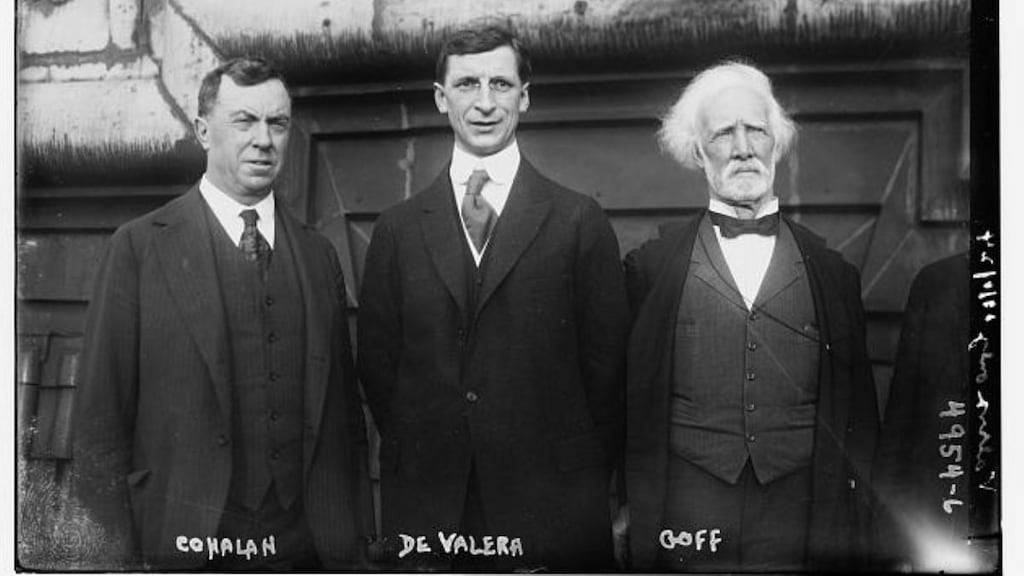New York State Supreme Justice Daniel Florence Cohalan, or “the Judge” as he was widely known, played a pivotal role in mobilising Irish-American support for the Irish nationalist cause during the Irish revolutionary decade 1912-1922.
To date, his life has remained somewhat of a mystery, his reputation in Ireland resting solely on his dramatic conflict with Éamon de Valera during the latter’s mission to the United States in 1919-1920.
Yet de Valera’s subsequent remark about his row with Cohalan – “Big as the country is, it was not big enough to hold the Judge and myself” – is testament not just to the rivalry between both men but also to Cohalan’s stature as leader of the Irish-American movement at this time.
Who was this powerful judge who ruffled de Valera’s ego, railed against the League of Nations and rankled not one but two American presidents – was accused of colluding with Germany in support of the Irish cause during the first World War and was courted by leading cultural nationalists in Ireland? This larger-than-life character was also a deeply committed family man who spent long summer vacations in Glandore for almost 30 years and was a highly respected confidant of several Irish politicians in the early days of the Free State.
Cohalan’s career as an Irish nationalist was heavily influenced by his immersion in American politics and society and this coloured his approach to Irish nationalist issues. In an Irish Times review article (December 3rd, 1957), FSL Lyons, the eminent Irish historian, noted the “dual allegiance” felt by the average Irish-American who supported the Irish nationalist cause in the United States. Lyons commented: “However nostalgically he may look back to the mother country, however generously he may respond to her needs, he cannot help from forming fresh attachments and striking deep roots in a new soil.”
There is no doubt that Cohalan sank deep roots in American soil. He was born in 1865 in Middletown in New York State to parents from west Cork. After graduating from Manhattan College, he established a prosperous legal practice in New York City. In 1902, like many ambitious Irish-American lawyers, he joined the Democratic Party organisation in New York City, popularly known as Tammany Hall. Cohalan’s dynamism and oratorical skills paved the way for his rapid rise within that political machine. By 1908, he had become Grand Sachem or associate leader of Tammany.
In 1911, as a reward for his services, Tammany boss Charlie Murphy attempted to persuade the New York legislature to appoint Cohalan as a Senator. This move was successfully blocked by a group of reform-minded Democrats led by none other than Franklin D Roosevelt (FDR), who regarded Cohalan as being too closely identified with Tammany corruption.
Instead, through the influence of the Tammany machine, Cohalan became a New York State Supreme Court Justice. This was a prestigious post which heightened Cohalan’s stature in New York society but, according to his obituary in the New York Times (November 1946), Cohalan never forgot this slight at the hands of FDR.
The attachment of most Tammany chiefs to Ireland was remote and sentimental. Not so with Cohalan, whose devotion to the Irish nationalist cause took a radical form. While still a student in Manhattan College, he joined the Clan na Gael then led by the old Fenian exile John Devoy. The clan was the successor movement to the American Fenian organisation and provided financial and moral support to the so-called “Home Organization”, the Irish Republican Brotherhood (IRB) in Ireland.
Cohalan’s father Timothy, who had emigrated from Cobh (then Queenstown) in 1848 at the height of the Great Famine, had been a member of the American Fenian brotherhood. This may have influenced his son’s decision but Daniel Cohalan’s nationalism was also shaped by his own loyalty to American principles and institutions. He believed that pro-British elements within the United States wanted to forge an Anglo-American alliance which would only serve to bolster the British Empire, threatening the autonomy of the United States.
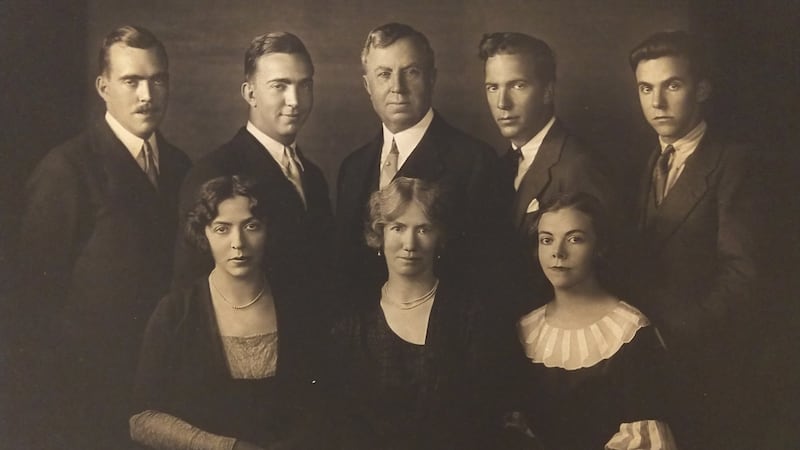
As in Tammany Hall, Cohalan rose rapidly in the ranks of the Clan. He became the organization’s district leader in New York in 1900 and in 1903 helped Devoy found the Gaelic American newspaper. Predictably, the Gaelic American, as the voice of the Clan, advocated an Irish republican and revolutionary solution to the Irish question, but it also had an American agenda. The newspaper attacked what it saw as White Anglo-Saxon Protestant (WASP) control of American foreign policy which favoured the British empire and also sought to defend the “interests of the Irish race” in the United States.
Cohalan became immersed in the activities of the Gaelic League in New York and his records at the American Irish Historical Society reveal his correspondence with important nationalist figures such as Patrick Pearse and Douglas Hyde. Both men visited Cohalan in New York and also at his holiday home in Glandore, purchased in 1911.
Cohalan was deeply sensitive to Wasp stereotypical views of Irish Catholics as not fully loyal to the United States, given their perceived allegiance to Rome and the Irish nationalist cause. Cohalan argued that the work of the Gaelic League in the United States should focus on banishing “such monstrosities as the stage Irishman” and correcting the “falsifying of American history” which obscured the heroic Irish contribution to the development of the United States.
In 1916, Cohalan became leader of the Friends of Irish Freedom organisation. It sought to exploit Irish-American disillusionment with Irish Parliamentary leader John Redmond’s support for the British war effort during the ongoing war in Europe. While the Friends’ constitution clearly stated its determination to aid Irish independence, it also campaigned for continued American neutrality.
Behind the scenes, Cohalan and leading members of the Clan such as Devoy and Joe McGarrity sought to enlist German help for an Irish Rising though with limited success, as witnessed by the capture of a German arms ship prior to the rebellion. After the failure of the Rising, Cohalan mobilised Irish-American outrage over the British execution of the rebel leaders. Yet, following America’s own entry into the war, both the Clan and the Friends supported the US war effort and adopted a low profile towards the Irish question.
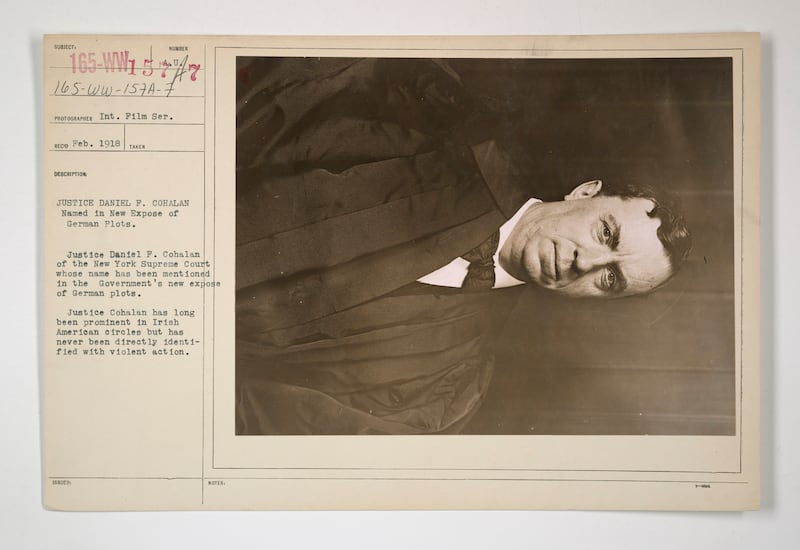
In September 1917, Cohalan’s contacts with Germany prior to the Rising were revealed by the press. The New York Herald described Cohalan as “the Kaiser’s adviser” in America. Cohalan narrowly escaped impeachment mainly because his German contacts had taken place when the United States was still neutral.
After the war in Europe had ended, the Friends grew rapidly in membership against the background of the Irish War of Independence. By the end of 1919, it numbered 70,000 regular members and this grew to 100,000 the following year.
In March 1919, Cohalan, as chairman of the Irish Race Convention in Philadelphia, called on President Woodrow Wilson to plead for “Self Determination for Ireland” at the postwar peace conference in Paris. This was in line with Wilson’s pronouncements about the war being fought for the oppressed nationalities of Europe. A reluctant Wilson met a delegation from the Convention, though only on condition that Cohalan, whom he perceived as a disloyal American, absent himself from the meeting. Cohalan readily agreed, though the delegation achieved little since Wilson was unwilling to offend Britain by advocating the Irish case.
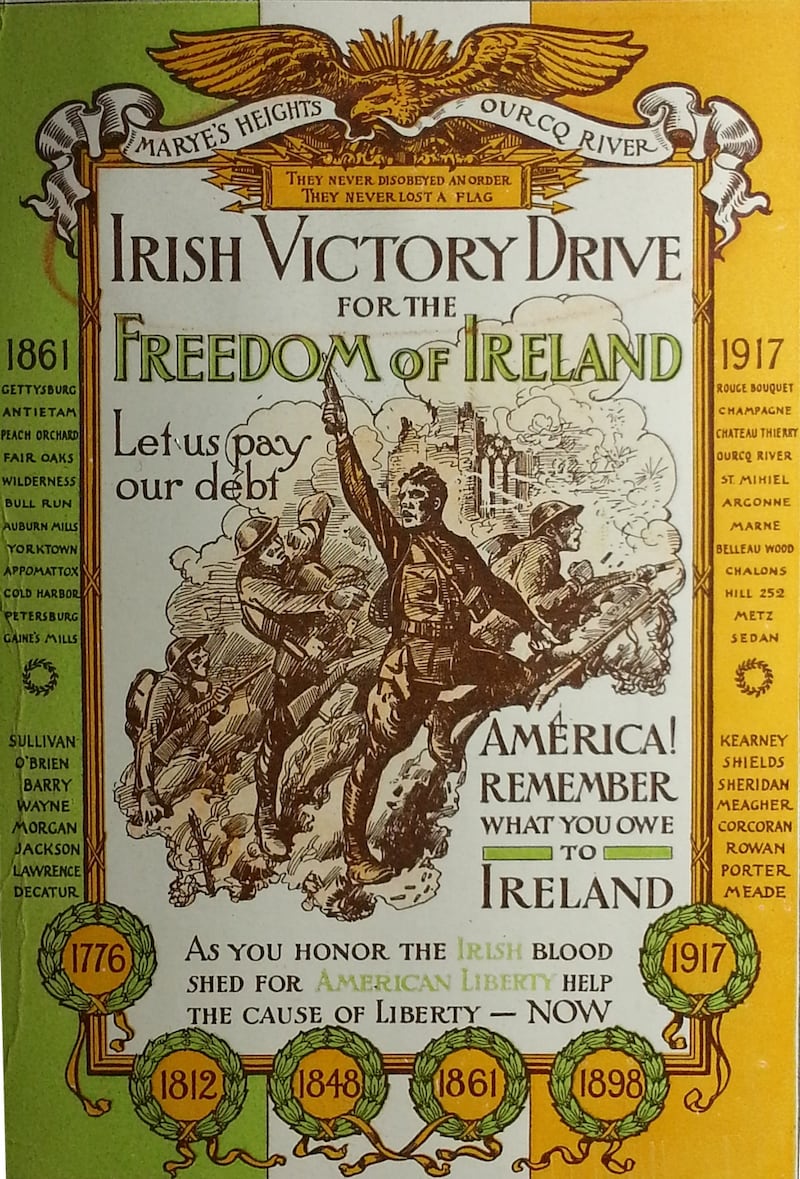
The Convention also established a “Victory Fund” to assist the cause of Irish independence but at Cohalan’s insistence, some of this fund was used to campaign against Wilson’s plan for a League of Nations. Cohalan, who was convinced that Wilson was pro-British, described the League as a “League for the preservation of the British Empire” rather than a mechanism to defend international peace.
De Valera, who arrived in New York in June 1919, recognised the important role that Cohalan could play in raising funds for the Irish cause and gaining American political recognition for the Irish Republic. This part of his mission was a success and with the help of the Friends he raised over $5 million through a Bond Certificate drive.
Yet differences arose with Cohalan on a number of Issues. Unlike Cohalan, de Valera did not oppose the League of Nations once an independent Ireland could become a member. Furthermore, de Valera’s proposal that US-Cuba relations could provide a possible model for Anglo-Irish relations provoked a furious reaction from both Devoy and Cohalan who feared that such a move would permit unwelcome British intervention in Ireland. A hostile exchange of letters followed between de Valera and Cohalan.
Divisions also erupted between both men over tactics at the Republican Presidential Convention in Chicago in June 1920. A Cohalan delegation and a de Valera delegation appeared, each urging the Convention to adopt competing resolutions in favour of Irish independence. Cohalan’s resolution was a loose wording that would have committed a Republican administration to press for Irish self-determination while de Valera called for outright recognition of an Irish republic.
In the end, a perplexed resolutions committee, to the delight of the British ambassador, washed their hands of the Irish question completely and refused to pass any resolution in favour of Ireland. By November 1920, relations between both men had broken down irretrievably. De Valera founded a new organisation called the American Association for the Recognition of the Irish Republic and severed all contact with Cohalan and the Friends.
Their personal enmity was soon overtaken by the bitter conflict within Sinn Féin over acceptance of the Anglo-Irish Treaty. Both Cohalan and Devoy supported the pro-Treaty side in the subsequent Irish Civil War, due partly to their opposition to de Valera but more fundamentally due to a pragmatism that characterised most Irish-American attitudes towards the settlement.
The Free State government of the 1920s recognised Cohalan’s usefulness to the new Irish State. According to an Irish Times report in August 1923, the President of the Executive Council, William T Cosgrave, Gen Richard Mulcahy and the Attorney General, Hugh Kennedy, all paid courtesy visits on Cohalan during his stay at the Royal Marine Hotel in Dún Laoghaire. Though still a New York State Supreme Court Justice, he campaigned with Cosgrave by plane around the country in the election campaign of that year.
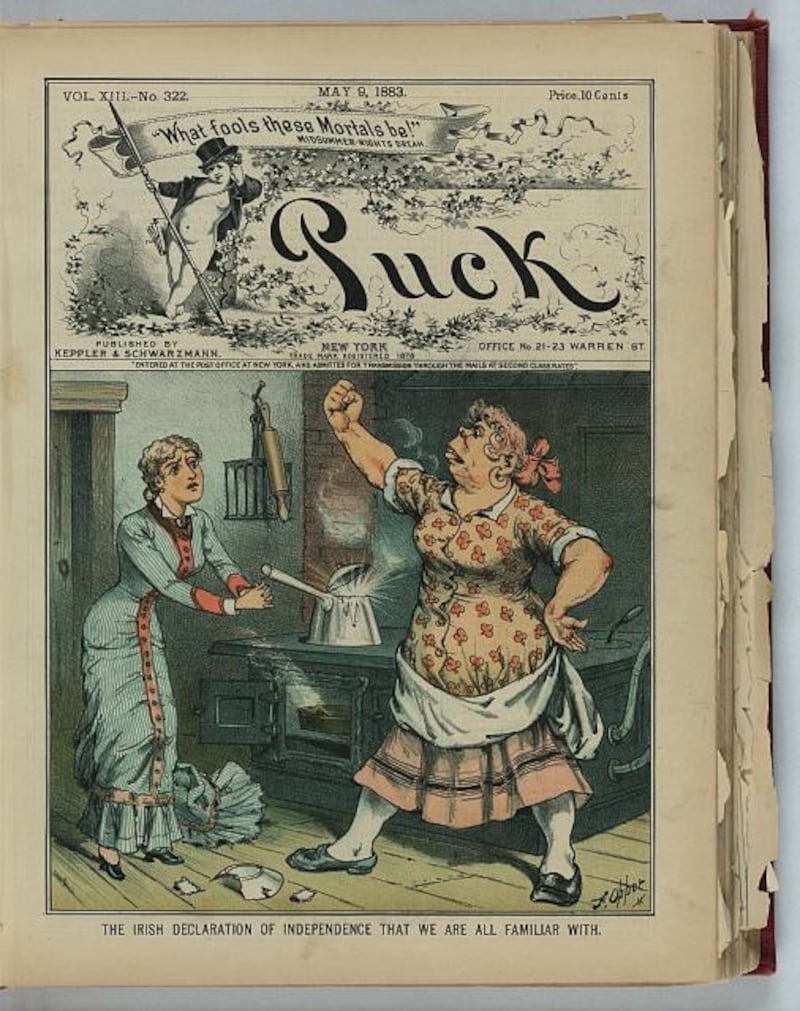
In the later 1920s, Cohalan focused most of his political energy on American politics. He continued to speak in favour of American isolationism and saw Roosevelt policies in the 1930s as being too pro-British. In 1936, Cohalan, along with other prominent Democrats, sought to block Roosevelt’s re-nomination for president at the Democratic Convention. While this attempt failed, it highlights Cohalan’s continued importance in American politics well into the 1930s.
The story of how the American social and political environment shaped Cohalan's nationalism not only outlines the underlying context for his clash with de Valera but also provides key insights into how Irish-American nationalism had radically different priorities from that of Irish nationalism during the revolutionary period and beyond.
Dr Michael Doorley is the author of Justice Daniel Cohalan 1865-1946: American patriot and Irish-American nationalist. (Cork University Press, 295pp, €39). An exhibition entitled The Life and Times of Justice Daniel Cohalan can be seen at dlr LexIcon, Dún Laoghaire until January 4th, 2020. The exhibition was created in partnership with St Joseph's College, Long Island NY and the Robert DL Gardiner Foundation.
